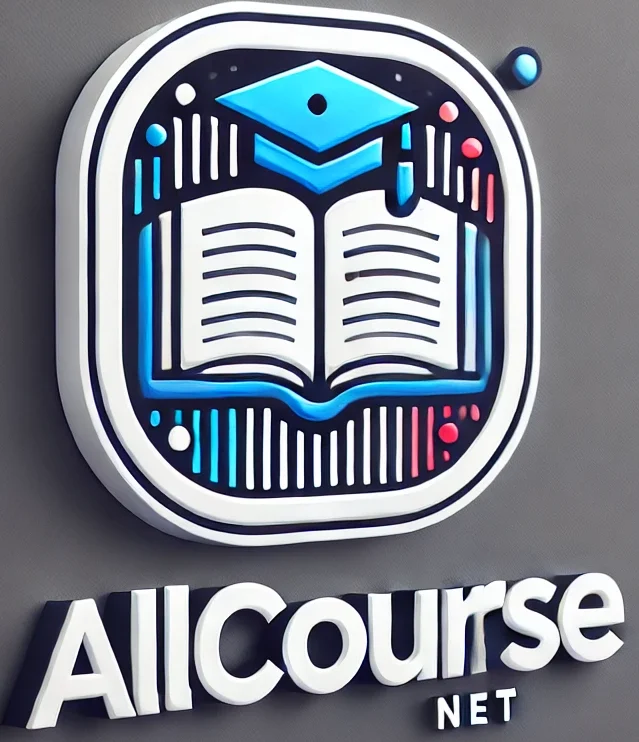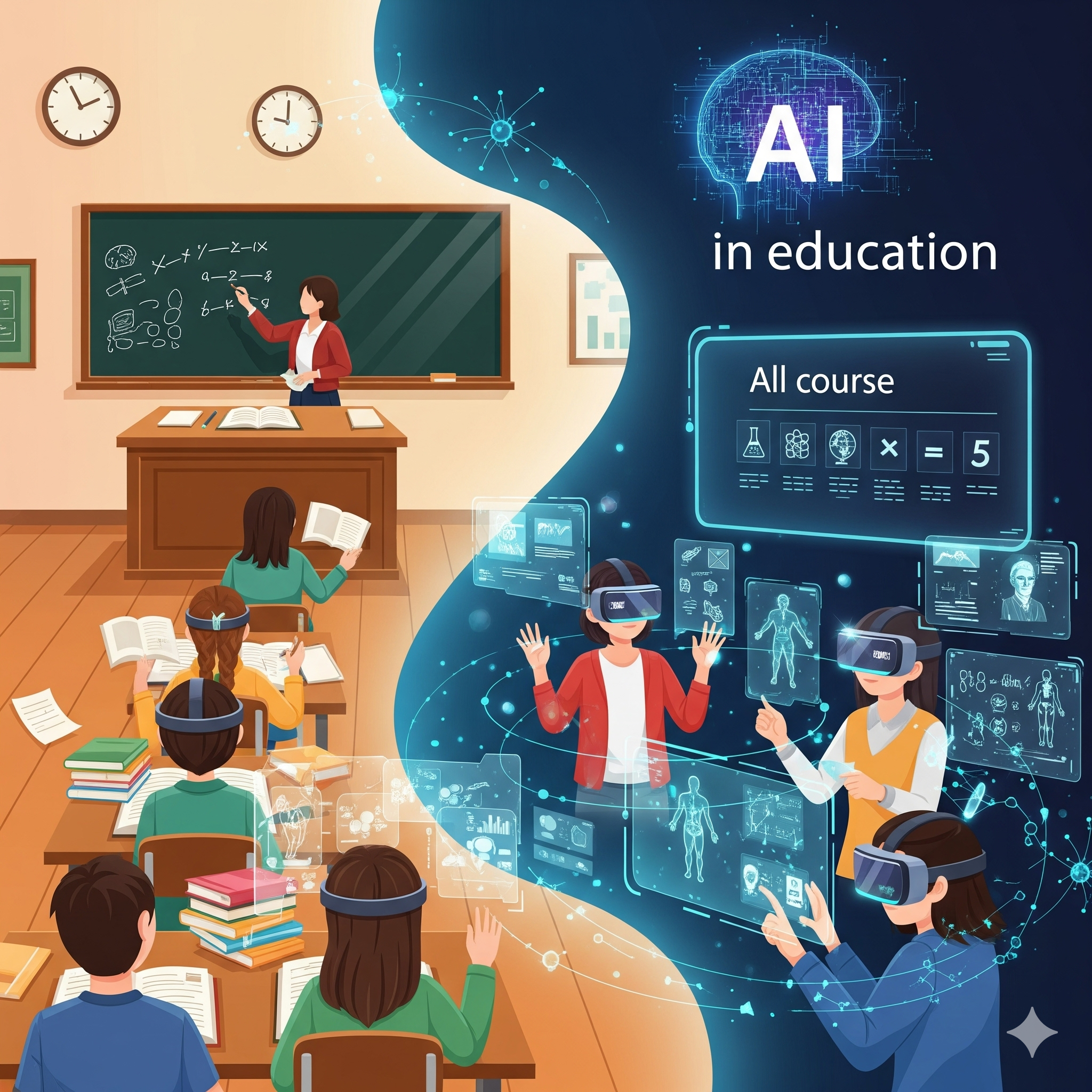The New Era of AI in Education (2025 and Beyond)
Introduction:
Imagine this: It’s a Monday morning in 2025. A student logs into their personalized learning platform before school starts. Instead of staring at a one-size-fits-all syllabus, their AI tutor has already tailored today’s lessons to the areas they struggled with last week. The math problems are at just the right level—challenging, but not overwhelming—and the system even offers hints in the student’s preferred learning style, whether visual, auditory, or hands-on.
Meanwhile, a teacher walks into the classroom with far less stress than a few years ago. She’s not buried under piles of assignments waiting to be graded. An AI-powered grading tool has already taken care of the routine assessments, highlighting where students had common mistakes and even suggesting ways she might address them in class. This frees her to focus on what really matters: connecting with her students, answering their deeper questions, and sparking curiosity.
Across the world, in a quiet university research lab, a researcher is preparing for a big presentation. Ten years ago, synthesizing thousands of journal articles would have taken months. Today, with the help of an AI literature review tool, they’ve scanned, summarized, and compared global studies in a matter of hours. The AI hasn’t just saved time—it’s revealed patterns and connections the researcher might never have noticed alone.
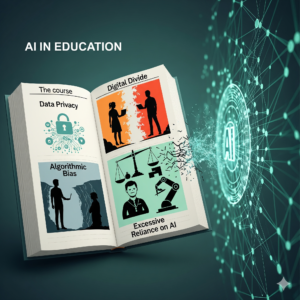
This is not a futuristic fantasy. This is education in 2025.
Why 2025 Marks a Turning Point
Artificial Intelligence has been slowly weaving its way into education for years, but 2025 represents a turning point. What used to be “nice-to-have” experimental tools are now deeply embedded in the daily lives of students, teachers, and researchers.
The pandemic years of the early 2020s accelerated digital adoption, forcing schools and universities to rethink how they deliver education. That momentum didn’t fade—it evolved. Now, AI is no longer seen as an optional supplement; it’s becoming an essential partner in learning and teaching.
But here’s the crucial point: AI in education is not just about efficiency. It’s not about replacing teachers, nor is it about handing over all the thinking to machines. At its best, AI is about enhancing human potential. It’s about making learning more personal, teaching more impactful, and research more innovative.
Education Before AI: A One-Size-
- Students sit in classrooms, all receiving the same lesson at the same pace.
- Teachers juggle the enormous task of planning, delivering, grading, and supporting dozens (sometimes hundreds) of learners at once.
- Researchers spend years gathering, analyzing, and interpreting data, often constrained by time and resources.
- This system worked—up to Fits-All System
To truly appreciate how transformative AI has become, it’s important to look back. For centuries, education has followed a relatively rigid model:a point. But it left many gaps: students who fell behind and never caught up, teachers overwhelmed by administrative tasks, and researchers slowed by the sheer weight of information.
AI has begun to fill those gaps.
The Promise of AI: Personalization, Accessibility, and Possibility
At its heart, the promise of AI in education can be summed up in three words: personalization, accessibility, and possibility.
- Personalization – Every learner is unique. AI recognizes this by tailoring education to each student’s strengths, weaknesses, pace, and interests. This shift from “one-size-fits-all” to “made-for-you” is one of the most powerful changes in modern education.
- Accessibility – Education is no longer bound by geography, language, or ability. AI-powered translation, speech-to-text, and adaptive tools are breaking barriers for students in rural communities, students with disabilities, and even learners who can’t attend physical classrooms.
- Possibility – Researchers and educators now have the chance to ask bigger questions, explore deeper insights, and connect with global knowledge in ways that were once unimaginable. AI expands the boundaries of what is possible in education.
Beyond the Hype: A Balanced View
Of course, it’s easy to get caught up in the excitement. Headlines often paint AI as a “magic solution” to all educational problems. But the truth is more nuanced. AI is not a replacement for human teachers, nor should it be. Education is more than just transferring information—it’s about inspiration, empathy, and human connection.
What AI offers is support. It takes on the heavy lifting of routine tasks, provides insights at scale, and personalizes learning in ways a single teacher simply can’t manage with a full classroom. But it’s the human touch—the encouragement from a teacher, the curiosity of a student, the creativity of a researcher—that makes education meaningful.
Why This Blog Matters
In this blog, we’ll explore how AI is transforming the educational landscape in 2025 and beyond. We’ll break it down into real, practical insights for three groups who live and breathe education every day:
Students – who want smarter, more engaging ways to learn.
Teachers – who want to save time and amplify their impact.
Researchers – who want to accelerate discovery and collaboration.
Along the way, we’ll also look at the broader impact: how AI is changing the entire system of education worldwide, the ethical challenges we must address, and what the future might hold by 2030.
This is not just a guide to tools—it’s a guide to a revolution. A revolution that is already underway.
Setting the Stage: A Human + AI Partnership
To set the right tone from the beginning: AI in education is not about humans versus machines. It’s about humans and machines working together.
- Students get personalized guidance, but they still need to think critically and creatively.
- Teachers get relief from repetitive tasks, but they still need to bring passion, mentorship, and emotional support.
- Researchers get data-driven insights, but they still need to interpret, challenge, and innovate.
AI doesn’t diminish the role of humans—it amplifies it. The key is to use it wisely, responsibly, and with a clear vision for the kind of education we want to create.
A Glimpse Ahead
In the coming sections, we’ll explore:
- The evolution of AI in education (how we got here).
- The best AI tools in 2025 for students, teachers, and researchers.
- Practical tips for making the most of these tools.
- How AI is changing not just classrooms, but the entire educational ecosystem.
- The challenges and ethical questions we must confront.
-
The exciting future of AI in education—what learning might look like by 2030 and beyond.
By the end, you’ll see why 2025 is not just another year in education—it’s the start of a new era, where AI becomes a trusted partner in shaping the next generation of thinkers, creators, and leaders.
The Evolution of AI in Education: From Experiment to Essential
If we take a step back, it’s striking to see how far Artificial Intelligence has come in the world of education. What feels “normal” in 2025—the personalized dashboards, AI-powered grading assistants, and smart research tools—was once a futuristic dream, often dismissed as “too experimental” or “too expensive.” Yet here we are, with AI embedded so deeply into learning that many students and teachers can’t imagine a classroom without it.

So how did we get here? To answer that, let’s trace the journey of AI in education: the early sparks, the growing pains, and the breakthroughs that made 2025 the year AI went from optional experiment to everyday essential.
The Early Days: AI as a Novelty (2000s–2015)
The seeds of AI in education were planted long before ChatGPT, Khanmigo, or adaptive platforms became mainstream. In the early 2000s, “AI in classrooms” meant very simple forms of computer-based learning. Think multiple-choice quiz software that adjusted difficulty based on answers, or clunky language-learning tools that gave robotic pronunciation feedback.
Universities experimented with data-driven systems to track student progress, but these tools were far from perfect. They often required expensive infrastructure, and the “AI” was more rule-based than truly intelligent. Teachers saw them as supplements at best, gimmicks at worst.
During this phase, AI wasn’t trusted. It was something you might read about in a research paper but rarely encountered in a real classroom.
The Growth Stage: AI as a Helper (2015–2020)
By the mid-2010s, AI started to show more practical promise. Language learning apps like Duolingo introduced AI-driven personalization, recommending exercises based on weak spots. Writing aids like Grammarly quietly became indispensable for millions of students, offering real-time corrections and stylistic suggestions.
At the same time, big universities began experimenting with predictive analytics. These systems could analyze attendance, assignment submissions, and test scores to flag students at risk of dropping out. For the first time, AI wasn’t just reacting to student performance—it was predicting outcomes and helping institutions intervene early.
Still, these tools were mostly optional add-ons. They were useful, yes, but the educational system hadn’t yet reached the point where AI was seen as integral.
The Pandemic Shift: From Optional to Urgent (2020–2022)
Then came the COVID-19 pandemic. Practically overnight, the world’s schools and universities had to move online. The sudden shift to digital learning exposed cracks in traditional systems:
- Not every student had access to quality teachers.
- Teachers struggled with overwhelming digital workloads.
- Students felt disengaged, isolated, and lost in online lectures.
AI stepped in—not as a luxury, but as a lifeline. Chatbots were deployed to answer students’ administrative questions around the clock. Adaptive learning platforms helped students keep up with core subjects even when teachers were stretched thin. Automated grading tools relieved teachers of some of the burden of checking endless online assignments.
Most importantly, people started to see AI not as a “robotic threat” but as a practical solution to real-world problems.
The Breakthrough Years: Mainstream AI Adoption (2022–2024)
The real leap came with the explosion of large language models (LLMs) like GPT-3 and GPT-4, followed by even more advanced systems leading into 2025. Suddenly, AI could do things people never thought possible:
- Generate entire essays and research outlines in minutes.
- Summarize complex scientific papers into plain language.
- Translate real-time conversations across multiple languages.
- Act as a tutor, capable of answering student questions on nearly any subject.
This was also when debate began to heat up: Should students be allowed to use AI in their work? Teachers feared plagiarism, universities scrambled to set guidelines, and society wrestled with what “learning” meant in an age where AI could answer almost anything.
Instead of rejecting AI outright, many educators embraced a new approach: teaching students how to use AI responsibly. Just like calculators or the internet before it, AI was reframed not as cheating, but as a tool—one that required critical thinking to use effectively.
The Present: AI as Essential (2025)
Now, in 2025, AI in education has settled into its new role: not a novelty, not an emergency fix, but an essential foundation of modern learning.
- For students, AI is a personalized tutor, available anytime. It adapts lessons, provides feedback, and helps build skills.
- For teachers, AI is a partner. It grades assignments, manages administrative tasks, and gives insights into class performance.
- For researchers, AI is a super-assistant. It sifts through mountains of data, identifies patterns, and accelerates discovery.
Perhaps the biggest sign of how normalized AI has become is this: schools and universities no longer ask, “Should we use AI?” Instead, the question is, “How can we use AI better, more ethically, and more effectively?”
From Experiment to Essential: What Changed?
So what made the difference between AI being a side project and AI being essential in 2025? A few key shifts stand out:
- Accessibility of Technology – Powerful AI tools are no longer locked behind university labs or big corporations. They’re accessible on smartphones, laptops, and even smart classroom devices.
- Affordability – Costs have dropped significantly. Many AI tools are free for basic use, making them accessible even to students in lower-income regions.
- Cultural Acceptance – Just as the internet and calculators were once controversial in schools, AI has now crossed the threshold into mainstream acceptance. Teachers, students, and parents understand its role.
- Integration into Systems – AI is no longer just a separate app or experiment. It’s built into core platforms like Google Classroom, Microsoft Teams, and research databases.
- Global Need – The world’s education challenges—teacher shortages, unequal access, overwhelming information—demanded solutions. AI stepped in to meet those needs.
A Human Story, Not Just a Tech Story
It’s easy to talk about “systems” and “tools,” but at its heart, the evolution of AI in education is a human story. It’s about the student in a rural village who can now access the same quality learning as a city student. It’s about the teacher who goes home less exhausted because AI handled the grading, leaving her with more energy for her family. It’s about the researcher who finally breaks through a problem that’s been unsolved for years.
Education has always evolved alongside technology—from the printing press, to chalkboards, to overhead projectors, to the internet. AI is simply the next chapter in that story. What makes 2025 different is that AI is not just an enhancement—it’s becoming the backbone of how education operates.
Looking Ahead
Understanding this evolution helps us see why AI is so central today. It also reminds us of an important lesson: every major shift in education comes with both opportunities and responsibilities. Just as we once taught students how to use search engines wisely, now we must teach them how to use AI responsibly.
The journey from “experiment” to “essential” is only the beginning. In the next section, we’ll zoom in on the student experience—how AI is reshaping learning itself, and what it means to grow up in a world where your tutor is as close as your phone, available 24/7, and tailored just for you.
AI for Students – Smarter Learning, Greater Access
For students in 2025, AI isn’t just a fancy add-on to education—it’s becoming the heart of how they learn, connect, and grow. Gone are the days when AI was just an optional app you used here and there. Today, it’s woven into almost every part of a student’s life, from the way they take notes, to how they prepare for exams, to the career advice they receive before stepping into the real world.
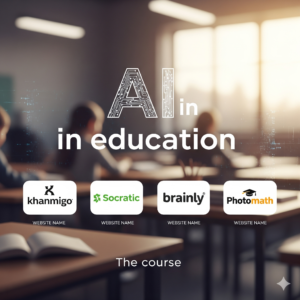
Think about it like this: for decades, students relied on textbooks, teachers, and libraries as their main sources of knowledge. Those were powerful tools, but they had limits—you couldn’t ask your textbook to explain a math problem in five different ways until you finally understood it. You couldn’t expect your library to quiz you at midnight the night before an exam. But with AI, those barriers are disappearing.
Personalized Learning, Finally a Reality
One of the biggest transformations students are experiencing is personalized learning. AI tools are now smart enough to adapt to each learner’s pace, style, and even mood. If you’re a student who struggles with algebra, an AI tutor can break down concepts into bite-sized explanations, give you step-by-step practice problems, and celebrate your progress when you finally crack it. On the flip side, if you’re racing ahead in literature, AI can recommend advanced readings or discussion prompts that push you further.
This is huge because traditional classrooms often had to teach to the “middle.” The fastest learners were bored; the struggling ones were left behind. AI is closing that gap. Everyone gets to move forward on their own terms.
Breaking Down Barriers of Access
Another powerful change? Access. Education used to depend heavily on geography, money, and resources. If you lived in a rural village, didn’t have access to world-class teachers, or couldn’t afford extra tutoring, your options were limited. AI is rewriting that story.
Today, a student in a small town can log into an AI platform and have the same advanced learning experiences as someone studying at a top private school in a big city. Need help with English? AI language tutors are available 24/7. Struggling with science? Virtual labs powered by AI let you “experiment” without ever stepping into a physical lab. For many students, AI is more than just convenience—it’s access to opportunities that once felt out of reach.
Smarter Study Habits and Exam Prep
Let’s be honest—students often spend more time figuring out how to study than actually studying. AI is changing that. Tools now help students organize their study schedules, summarize long readings into digestible notes, create flashcards instantly, and even generate quizzes to test their knowledge.
Take revision, for example. Instead of re-reading the same notes ten times, students can ask an AI tool: “Explain this physics concept like I’m a beginner,” or “Quiz me on the main themes of this novel.” The flexibility means students can prepare in a way that matches their style—whether that’s visuals, practice questions, or quick summaries.
Emotional and Mental Support
This part often gets overlooked, but it’s just as important. School can be stressful, and students today face more pressure than ever. AI companions and chatbots are stepping in as mental health check-ins, helping students track stress, reminding them to take breaks, or suggesting mindfulness exercises. Of course, AI isn’t a replacement for professional counseling, but for students who may not have access to mental health resources, even small nudges can make a big difference.
Practical Tools Students Are Loving in 2025
- AI Tutors (like ChatGPT-based apps, Khanmigo, or ScribeAI): For homework help and concept explanations.
- Note-taking Assistants (like Notion AI or Otter.ai): Turning long lectures into neat, searchable notes.
- Study Companions (like Quizlet AI, Perplexity, or Explainpaper): Generating practice questions, summaries, and simplified explanations.
- Career Guidance Tools: Matching students’ strengths and interests with future opportunities.
Tips for Students to Get the Most Out of AI
- Don’t just copy—interact. The real magic happens when you ask questions, test yourself, and practice.
- Use AI as a supplement, not a substitute. It’s there to guide you, not do the work for you.
- Mix AI with human learning. Teachers, peers, and discussions still matter. AI should add to that, not replace it.
- Be mindful of accuracy. Double-check facts and answers; AI is powerful, but it’s not flawless.
A Student’s World, Reimagined
So what does all this mean in the bigger picture? It means that students in 2025 are no longer trapped by the limitations of one-size-fits-all education. They’re no longer just passive receivers of knowledge. They’re active explorers—asking questions, experimenting with ideas, and learning in ways that feel natural to them.
For many, AI has turned learning from something stressful and rigid into something flexible, creative, and even exciting. And that’s not just a technological upgrade—it’s a human upgrade. Because when students feel more capable, supported, and inspired, they don’t just learn better—they live better.
AI for Teachers – Redefining the Role of Educators
If students are the ones sprinting forward with AI in their backpacks, teachers are the ones steering the ship, making sure the ride doesn’t get too bumpy. And in 2025, AI isn’t here to replace teachers—it’s here to take some weight off their shoulders so they can finally focus on the part of teaching that matters most: connecting with students.
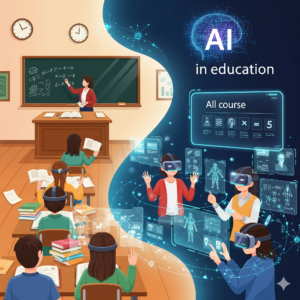
For decades, teachers have been superheroes stretched too thin. They’re lesson planners, graders, counselors, administrators, and sometimes even second parents. Between preparing tomorrow’s lesson and grading last week’s essays, many teachers barely have the time to breathe, let alone experiment with fun, creative teaching ideas.
That’s where AI is stepping in—quietly, steadily—transforming not just how classrooms run, but how teachers see their role.
The End of Endless Paperwork
Let’s be real. Ask any teacher what eats up the most time, and they’ll sigh and say: paperwork. Endless grading, report writing, lesson planning. These tasks matter, but they rarely light a spark of joy.
In 2025, AI is becoming the ultimate teacher’s assistant. Need a lesson plan on the American Civil War tailored to 9th graders? AI can sketch out a structure, suggest activities, and even find age-appropriate reading passages. Have 120 essays waiting for feedback? AI can highlight common mistakes, give draft comments, and let the teacher focus on the personal, encouraging touches that students actually remember.
Instead of drowning in admin work, teachers are reclaiming time—the most valuable resource in education.
Every Student, Seen and Supported
Picture a classroom. Thirty students, each with different strengths, weaknesses, and learning speeds. In the past, teachers had to try to balance it all, usually teaching to the “middle.” That meant fast learners got bored and struggling learners felt invisible.
AI is changing that. With smart dashboards and adaptive tools, teachers can now see at a glance who needs extra help with fractions, who’s excelling in writing, and who hasn’t quite grasped yesterday’s history lesson.
This doesn’t mean the teacher stops teaching—it means they get a clearer view of where to step in. Imagine a teacher walking into class already knowing which three students need a little extra attention today. That’s powerful.
Creativity, Unlocked Again
When the workload eases, creativity blooms. Teachers who once barely had time to tweak a worksheet are now able to dream bigger. A history teacher can guide students through an AI-powered simulation of the French Revolution. A science teacher can let students conduct virtual lab experiments without worrying about equipment costs. A language teacher can pair students with AI pen pals across the globe, practicing real-world communication.
Instead of just delivering content, teachers are crafting experiences.
The Heart of Teaching: Human Connection
Here’s the part AI will never replace: the human bond. A student doesn’t just need facts—they need encouragement, patience, and someone to believe in them when they doubt themselves.
AI might flag that a student’s grades are slipping, but it’s the teacher who leans in and says, “I can see you’re struggling. Let’s figure this out together.” That eye contact, that trust, that sense of care—no machine can replicate it.
AI is powerful, but empathy, humor, and inspiration are still human superpowers. And in 2025, teachers finally have more space to use them.
Tools Teachers Are Loving in 2025
- AI Lesson Planners – Apps that whip up lesson ideas in minutes (Eduaide.ai, Curipod).
- Grading Assistants – Tools that speed through multiple-choice and essays, leaving teachers to focus on personalized feedback (Gradescope AI).
- Classroom Dashboards – Platforms that show real-time student progress and suggest next steps.
- Engagement Boosters – AI-powered games and interactive activities (Kahoot! AI, Nearpod AI).
Tips for Teachers Using AI
- Stay in the driver’s seat. Let AI suggest, but you decide what fits your students.
- Use it for time-saving, not soul-saving. Keep your human touch in feedback and teaching.
- Mix data with intuition. Numbers help, but your gut feeling about a student is just as important.
- Model good habits. Show students how to use AI responsibly, so they don’t grow dependent on it.
From Instructor to Mentor
Perhaps the biggest change AI has sparked is how teachers see themselves. They’re no longer expected to be walking encyclopedias. Students can Google facts in seconds, or ask AI to explain theories. What students really need now is guidance—someone to teach them how to question, think critically, and use technology responsibly.
Teachers are becoming more like mentors and coaches, helping students develop skills that go beyond textbooks: resilience, empathy, curiosity, teamwork. These are things no AI can teach.
A Brighter Tomorrow for Teachers
For years, burnout has haunted the teaching profession. Too much work, too little recognition. But in 2025, with AI stepping in to handle the heavy lifting, teaching feels lighter. Teachers can rediscover joy in the classroom, experiment with creativity, and focus on what drew them to teaching in the first place: making a difference in young lives.
AI isn’t replacing teachers—it’s restoring them. And that might be the most important transformation of all.
AI for Researchers – Speeding Discovery and Collaboration
If students are learning with AI and teachers are guiding with it, researchers are the ones truly pushing its limits. For them, AI isn’t just another tool—it’s like having a whole research team working beside them. In 2025, it’s helping scientists, scholars, and thinkers cut through the clutter, work faster, and uncover insights that once took years.
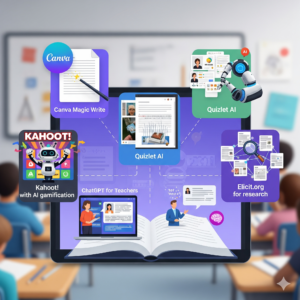
From Endless Reading to Quick Insights
Ask any researcher what the toughest part of starting a project is, and they’ll probably say the literature review. It means digging through dozens, sometimes hundreds, of academic papers to figure out what’s already been studied and where the gaps are.
That used to take months. Now, AI can scan entire databases in minutes, summarize findings, and even point out which studies might be the most relevant. Instead of drowning in PDFs, researchers can focus on what really matters—asking better questions and designing smarter experiments.
Data Crunching at Lightning Speed
Another game-changer? Data analysis. Whether it’s a historian sorting through centuries of text, a medical scientist analyzing genetic data, or a social scientist working with thousands of survey responses, AI can handle huge amounts of information in a fraction of the time.
It doesn’t just crunch numbers—it finds patterns that humans might miss. For example, AI can detect subtle trends in climate data or highlight unusual correlations in medical studies. Researchers then step in to interpret, question, and give meaning to those patterns.
Writing and Sharing Research Made Easier
Research isn’t finished until it’s shared—and that’s often the hardest part. Academic writing requires clarity, structure, and endless formatting details. AI in 2025 has become a reliable writing partner. It helps polish drafts, suggests simpler phrasing, and keeps citations organized.
For international researchers, this has been a huge equalizer. Someone in Japan, Brazil, or Nigeria can use AI to refine English-language papers, ensuring their ideas get the attention they deserve without being buried under language barriers.
Collaboration Without Borders
One of the most exciting shifts is how AI makes global collaboration smoother. A researcher in Kenya and one in France can now work on the same project, using AI tools that translate technical terms, keep track of edits, and even suggest connections between their separate fields.
This has given rise to new “hybrid” areas of study—like combining neuroscience with artificial intelligence, or environmental science with economics—because AI makes it easier to cross those boundaries.
Tools Researchers Love in 2025
- Semantic Scholar AI / Scite.ai – Find and fact-check key studies.
- Elicit – Helps summarize papers and design research questions.
- DataRobot, IBM Watson Studio – Crunch massive datasets quickly.
- Trinka AI, Grammarly GO – Edit and polish academic writing.
- Connected Papers, Research Rabbit – Visual maps of how studies connect.
Using AI Wisely
AI is powerful, but it’s not perfect. Researchers in 2025 are learning to use it as a helper, not a replacement. Here are a few smart practices:
- Keep your judgment. AI suggests patterns, but only humans can decide which ones matter.
- Don’t skip depth. Summaries are helpful, but real understanding still comes from close reading.
- Check bias. If AI is trained on limited data, it might carry blind spots.
- Be transparent. Many journals now ask researchers to disclose AI use.
A New Kind of Researcher
The biggest change AI brings isn’t just speed—it’s freedom. Instead of spending months sorting through data or reformatting citations, researchers can spend more time being curious, asking bold questions, and exploring new directions.
It also levels the playing field. A brilliant student at a small university can now access the same powerful tools as someone at a top Ivy League lab. This democratization means more voices, more perspectives, and ultimately, richer discoveries.
Looking Ahead
What does this mean for the future? It means breakthroughs could come faster—from new medicines to climate solutions to technologies we haven’t even imagined yet. AI doesn’t steal the role of the researcher—it amplifies it.
In the end, research has always been about curiosity and courage—the willingness to ask “what if?” AI simply makes it easier to chase those questions and find answers faster.
And that’s how, in 2025, AI is quietly reshaping not just research, but the future of human knowledge itself.
Tips and Best Practices for Students, Teachers, and Researchers
AI is exciting, powerful, and everywhere in 2025. But just like any powerful tool, how you use it matters. Think of it like driving a car—you can get to your destination faster, but only if you know how to steer responsibly. Here are some practical, real-world tips for students, teachers, and researchers to make the most out of AI without losing the human touch.
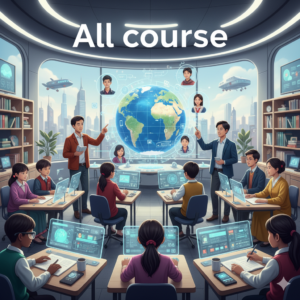
🎓 For Students – Learn Smarter, Don’t Cut Corners
Students are often the first to experiment with new tech, and AI is no exception. But the line between “help” and “shortcut” can get blurry.
Best practices:
- Use AI as a tutor, not a cheat sheet. If ChatGPT solves a math problem, ask how it solved it—don’t just copy the answer.
- Check sources twice. Tools like Perplexity AI or Elicit may suggest citations—always cross-check with your textbook or library.
- Build your own voice. GrammarlyGO or Jasper can polish your writing, but make sure your ideas and style shine through.
- Set boundaries. Don’t let AI replace your own study habits. Use it to guide, summarize, or explain—not to think for you.
👉 Remember: The goal is to become a better learner, not just a faster one.
👩🏫 For Teachers – Balance Efficiency with Empathy
Teachers know that no app can replace the spark of a human connection in the classroom. Still, AI can give them precious hours back.
Best practices:
- Automate the busy work. Use AI for grading drafts, creating quizzes, or designing slides—freeing you to focus on mentorship.
- Stay the guide. Students may rely on AI heavily. Remind them that real learning comes from dialogue, mistakes, and critical thinking.
- Be transparent. Let your class know which AI tools you’re using. This helps normalize responsible use.
- Teach AI literacy. Just like you teach research skills, guide students on how to fact-check and use AI ethically.
👉 Remember: AI can handle routine tasks, but your empathy, encouragement, and experience are irreplaceable.
🔬 For Researchers – Speed Up Without Losing Rigor
Researchers stand to gain the most from AI—but also risk the most if they use it carelessly.
Best practices:
- Use AI for efficiency, not conclusions. Let AI organize data, suggest patterns, or summarize papers—but always double-check findings yourself.
- Stay ethical. Acknowledge AI assistance in your work when appropriate. Transparency builds trust.
- Avoid “AI echo chambers.” Don’t just rely on machine summaries—read the actual papers to catch nuances.
- Collaborate, don’t isolate. AI can connect you with global research faster than ever, but human collaboration still drives big discoveries.
👉 Remember: AI makes research faster, but integrity makes it meaningful.
🌍 General Tips for Everyone
Start small. Pick one tool and learn it deeply before adding more.
How AI is Reshaping the Education System Globally
Education has always reflected the society it serves. In the past, that meant chalkboards, then projectors, then computers. Now in 2025, we’re entering a new era: AI-powered learning systems that are changing classrooms from Pakistan to Paris, from small rural schools to world-class universities.
The impact isn’t just about new tools—it’s about a shift in access, opportunity, and how we think about learning itself.
📚 Breaking Down Barriers to Access
One of the biggest transformations AI brings is accessibility.
-
Rural vs. urban: Students in remote villages who once lacked quality teachers can now log in to AI tutors that explain lessons step by step, in their local language.
-
Cost barriers: Free or low-cost AI platforms mean high-quality education is no longer locked behind expensive tuition fees.
-
Personalized support: AI doesn’t get tired or impatient. A struggling student can ask the same question 20 times, and the AI will answer calmly each time.
👉 This is especially powerful in developing countries, where trained teachers are limited but smartphones are everywhere.
♿ Education for All – Including Differently-Abled Learners
AI is making education more inclusive than ever.
-
Students with dyslexia can use text-to-speech tools.
-
Visually impaired learners can access real-time AI descriptions of images and charts.
-
Deaf students benefit from instant AI-generated captions during lectures.
-
AI-powered translation helps migrant and refugee children learn in classrooms where they don’t yet speak the language.
These shifts don’t just help individuals—they make classrooms more equal, giving every student a fairer chance.
🏫 How Schools and Universities Are Changing
AI isn’t only helping students—it’s changing how schools themselves operate.
-
Smart timetables: AI tools can optimize class schedules, making sure resources are used efficiently.
-
Predictive analytics: Universities are using AI to spot students at risk of dropping out and provide early support.
-
Adaptive curriculum: Instead of a one-size-fits-all syllabus, AI platforms adjust lessons to match each learner’s pace.
This moves education from being rigid to being fluid, responsive, and tailored.
🌍 Governments and Global Policy
Around the world, education ministries are starting to weave AI into national strategies.
-
China is investing heavily in AI classrooms, combining smart monitoring with adaptive lessons.
-
Finland focuses on AI literacy, making sure every student learns not just with AI, but also about AI.
-
African countries are leapfrogging traditional models, using mobile-first AI platforms to reach millions of students with little infrastructure.
-
UNESCO and OECD are pushing for ethical frameworks so AI in education remains fair, safe, and human-centered.
This global momentum shows that AI is no longer just a “tech experiment.” It’s now a cornerstone of policy and planning.
💡 The Bigger Picture: Redefining Education
The real change isn’t just about tools. It’s about reimagining what education means.
-
Instead of memorizing facts (which AI can recall instantly), the focus shifts to critical thinking, problem-solving, and creativity.
-
Instead of testing everyone the same way, we may see personalized assessments where AI measures progress more fairly.
-
Instead of education being a one-time phase (school → job), AI encourages lifelong learning, where people reskill and upskill at any age.
In short, AI is helping the world move from “teaching for exams” to teaching for life.
✨ A Human + AI Partnership
Of course, AI won’t replace teachers, professors, or mentors. But it will change their roles. Educators will guide, inspire, and connect, while AI provides the personalized support, resources, and data.
Together, they can create a system where no learner is left behind.
- questions. With AI, the quality of your prompt shapes the quality of your answer. Practice “prompting” like you practice writing.
- Stay human. Creativity, empathy, and critical thinking are skills no AI can replace—make them your superpowers.
- Respect privacy. Don’t share sensitive data or personal details with AI apps unless they’re trusted and secure.
- Keep learning. AI is evolving fast—stay curious and open to updates.
The Golden Rule: Don’t Outsource Your Brain
AI in education isn’t about handing over your thinking. It’s about enhancing it.
If you treat AI as a partner instead of a replacement, you’ll unlock its real power: giving you time and space for creativity, curiosity, and human connection.
The Challenges of AI in Education
As exciting as AI is, it’s not a magic wand. Every new technology brings both opportunities and challenges, and education is no exception. While AI is reshaping learning in powerful ways, it also raises important concerns that students, teachers, and policymakers need to face head-on.
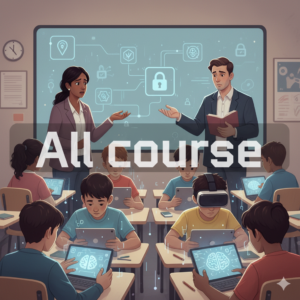
⚖️ The Risk of Over-Reliance
One of the biggest fears is that students may stop thinking for themselves. If AI can write essays, solve math problems, or summarize entire books, what’s left for the learner?
- Shortcut temptation: Copy-pasting an AI answer is quicker than struggling through the problem.
- Skill erosion: Without practice, students may lose critical skills like problem-solving, writing, or analyzing.
- Shallow understanding: AI can provide information, but deep learning comes from making mistakes and reflecting on them.
👉 The challenge here is to strike a balance—AI as a guide, not a crutch.
🛡️ Academic Integrity and Plagiarism
Teachers worry (with good reason) about AI-generated assignments. It’s becoming harder to tell whether a student wrote a paper or an algorithm did.
- AI-detection tools are improving, but not perfect.
- Some students see AI as a “loophole” rather than a learning tool.
- This creates new ethical dilemmas—what counts as help and what counts as cheating?
👉 The solution may not be punishment alone, but teaching students how to use AI responsibly.
🔒 Privacy and Data Concerns
AI systems thrive on data—student data, teacher data, even research data. But where is this information stored, and who controls it?
- Schools need to ensure personal details aren’t shared with third parties.
- Parents worry about surveillance in AI-powered classrooms.
- Researchers fear their unpublished data could be mishandled.
👉 Without strong privacy safeguards, trust in AI could collapse.
🌍 Inequality in Access
Ironically, while AI has the potential to close the education gap, it could also widen it.
- Wealthier schools can afford premium AI platforms, while underfunded schools may rely only on basic tools.
- In regions with poor internet access, AI remains out of reach.
- If not managed carefully, AI might deepen the digital divide rather than shrink it.
👉 Governments and organizations need to ensure that AI tools are available to all, not just the privileged.
🤖 The Problem of Bias and Errors
AI isn’t perfect—it learns from human data, which means it can inherit human flaws.
- A translation tool might favor one language over another.
- An AI grader might misinterpret cultural or creative writing styles.
- A research assistant could summarize a paper incorrectly, leading to misinformation.
👉 This reminds us: AI is powerful, but not infallible. Human oversight is always necessary.
🧑🏫 The Fear of “Replacing Teachers”
Another challenge is psychological: some educators fear that AI will make their role obsolete.
In reality, AI can automate tasks, but it can’t replace the empathy, mentorship, and creativity of a human teacher. The danger lies in education systems treating AI as a cheap substitute rather than a supportive partner.
⚡ The Pace of Change
Finally, one of the biggest challenges is simply keeping up. AI evolves so quickly that what’s new today feels outdated tomorrow.
- Students must constantly adapt.
- Teachers need training to use AI effectively.
- Policymakers struggle to write rules fast enough.
This speed creates confusion, but it also pushes the education world to stay innovative and flexible.
💡 Turning Challenges into Opportunities
Yes, these challenges are real. But they’re not roadblocks—they’re guideposts. If we acknowledge them early and respond wisely, AI can enhance education without eroding its values.
- Encourage AI literacy alongside digital literacy.
- Focus on ethics and transparency.
- Ensure equal access and strong privacy protections.
With the right safeguards, AI doesn’t have to be a threat—it can be a bridge to a more inclusive and effective learning system.
The Future of AI in Education: 2030 and Beyond
If 2025 feels revolutionary, just imagine what the next decade could bring. By 2030, AI won’t just be a helpful tool in classrooms—it could be the backbone of how we learn, teach, and discover knowledge. The seeds we see today—AI tutors, smart classrooms, research assistants—are just the beginning.
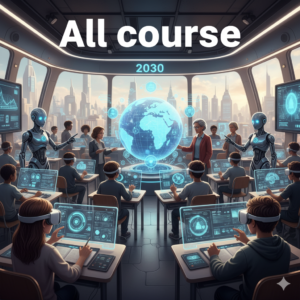
🧑🏫 Personalized Learning at a Whole New Level
Right now, AI can adjust lessons to a student’s pace. But in the future, it might become more like a personal mentor.
- Imagine an AI that knows your strengths, weaknesses, and learning style better than any standardized test.
- It could design a completely customized education path—whether you’re a fast learner in math but need extra help in writing.
- Instead of classrooms moving at one speed, each student could progress at their own rhythm.
👉 This means education could finally break free from the “one-size-fits-all” model.
🌍 A Truly Global Classroom
By 2030, physical borders may matter less for education.
- AI-powered translation could allow a student in Brazil to take a lecture in Japan and understand it instantly.
- Virtual reality (VR) and augmented reality (AR) might let students “step into” history lessons, science labs, or cultural exchanges with classmates worldwide.
- Universities could become global hubs, where anyone, anywhere, can access world-class professors without needing to move countries.
👉 The idea of “local” education could transform into borderless learning.
♿ Inclusion as the Norm, Not the Exception
By the next decade, accessibility may no longer be an afterthought.
- Real-time captioning, AI sign-language interpreters, and adaptive learning for neurodiverse students will become standard.
- Every child—regardless of disability, geography, or background—could have an equal seat in the classroom.
👉 This isn’t just about technology. It’s about justice in education.
🔬 Research at Lightning Speed
For researchers, the 2030s may feel like an era of supercharged discovery.
- AI could analyze vast data sets in seconds, spotting patterns humans might miss.
- Collaborative platforms might allow scientists across continents to work together seamlessly.
- Breakthroughs in medicine, climate science, and technology could arrive faster because AI accelerates the “boring parts” of research.
👉 The dream of solving global challenges—like pandemics or climate change—might feel more reachable.
⚖️ Ethics Will Define the Future
But with all this power comes responsibility. By 2030, the biggest questions may not be about what AI can do, but what it should do.
Should AI decide how children are assessed?
Should data about learning habits be stored forever?
Who owns the discoveries made with AI assistance?
👉 The answers will shape whether AI becomes a tool for empowerment or a source of new inequality.
🌟 A Partnership, Not a Replacement
One thing seems certain: education will remain deeply human. Teachers won’t disappear; they’ll evolve into guides, mentors, and motivators. Students won’t just memorize facts; they’ll learn how to think critically, create, and collaborate with both humans and machines.
By 2030, AI will likely fade into the background—just like we don’t think twice about calculators or the internet today. It will simply be part of how learning happens.
✨ Looking Ahead with Hope
The future of AI in education isn’t about robots taking over classrooms. It’s about creating a world where knowledge is:
-
More personalized – tailored to every learner.
-
More inclusive – accessible to all, regardless of barriers.
-
More global – connecting people across cultures and continents.
-
More empowering – giving humans the tools to solve bigger problems.
If we use it wisely, AI won’t diminish education—it will elevate it, making learning more human than ever.
Conclusion – A Human-Centered AI Revolution in Learning
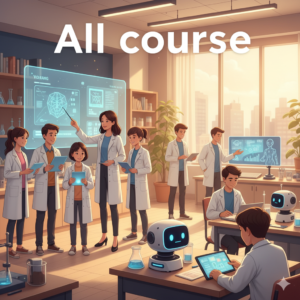
We’ve traveled through a lot in this blog—students, teachers, researchers, tools, challenges, and even a glimpse into the future. One thing is clear: AI is no longer just a tool in education; it’s shaping how we learn, teach, and discover knowledge in 2025 and beyond.
But here’s the key point: AI doesn’t replace humans. It empowers them.
🤝 A Partnership, Not a Replacement
Students can now learn at their own pace with AI tutors. Teachers can focus on mentoring instead of drowning in paperwork. Researchers can explore new ideas faster without being buried in data.
In every case, AI handles the repetitive, time-consuming tasks—so humans can focus on what truly matters: creativity, critical thinking, empathy, and curiosity.
🌍 Opportunities and Responsibilities
AI opens incredible doors. Classrooms are becoming more inclusive, personalized, and global. Research is faster and more collaborative. Learning can happen anytime, anywhere.
But with great power comes responsibility. We must use AI ethically, teach students to use it wisely, protect privacy, and ensure access for everyone. Otherwise, these amazing tools could deepen gaps instead of closing them.
✨ The Future is Human + AI
The story of AI in education is not about technology taking over—it’s about partnership. Imagine a world where students, teachers, and researchers work alongside AI to unlock their full potential.
- Students grow into confident, curious learners.
- Teachers become mentors and guides, not just graders.
- Researchers push the boundaries of knowledge faster and smarter.
AI may provide the tools, but humans provide the heart. Together, they can create an education system that is more equitable, engaging, and inspiring than ever before.
🌟 Final Thought
Education has always been about helping people reach their potential. AI is simply the next chapter in that journey. If we embrace it responsibly, the future of learning isn’t just digital—it’s deeply human.
And in the end, that’s the real revolution: a world where technology empowers us to be smarter, kinder, and more capable of shaping our own futures.
